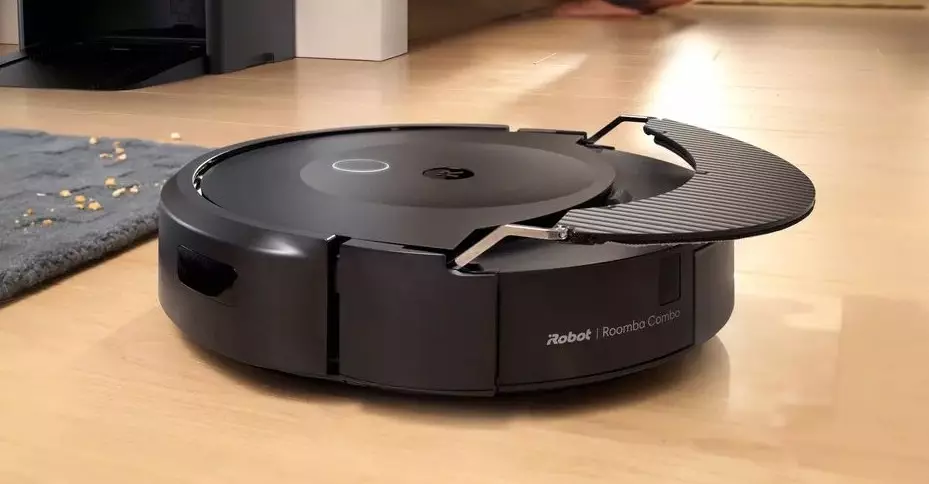With the recent launch of iOS 18.4, Apple has delivered a significant advancement for smart home technology—a rollout that symbolizes the apex of connected living. Central to this update is the integration of the Matter protocol, which allows seamless communication among smart devices from various manufacturers, including renowned names like Roborock, iRobot, and Ecovacs. This embrace of interoperability is not just a technical upgrade; it’s a fundamental shift towards creating a unified ecosystem that enhances user experience and fosters innovation across the smart home landscape.
The core of this update lies in its immediate benefits for robot vacuum owners. With iOS 18.4, users can now effortlessly manage their robotic companions via the Apple Home app. This integration not only allows control over basic functions but also opens up opportunities for automations and scene settings that work across devices, marking a new era for smart home enthusiasts. It’s a compelling proposition; imagine commanding your robotic vacuum to clean while setting the mood with smart lights—all orchestrated through a single application.
Roborock Stepping Up: Enhanced Firmware Updates
Roborock’s response to this update has been impressive. The company has committed to enhancing Matter protocol support across its premium line of robot vacuums, including models like the S8 MaxV Ultra and the Saros series. By providing firmware updates that roll out shortly after the iOS update, Roborock has positioned itself at the forefront of this technology integration. The enhancements promise improved connectivity, not just with Apple devices, but also with other smart home platforms, including Google Home and Amazon Alexa.
This commitment underscores a significant shift in the market. Manufacturers are no longer operating in isolated silos; they are working collaboratively towards compatibility that benefits consumers. Roborock’s efforts ensure that users can command their vacuums from any device—be it an iPhone, Apple Watch, or even a HomePod—thereby enhancing the convenience that tech-savvy homeowners crave.
iRobot’s Groundbreaking Compatibility
While Roborock has been proactive, iRobot is not lagging behind. The company’s Roomba Combo 10 Max is set to be the first vacuum fully compliant with Matter and seamlessly integrated into Apple’s Home ecosystem. This allows users unprecedented convenience—initiating and scheduling cleanings with a few taps or vocal commands through Siri. By aligning with the Matter standard, iRobot confirms its commitment to evolving with consumer needs and technological advancements.
The implications of this shift are monumental. No longer are consumers beholden to proprietary systems that limit the functionality of their devices. Instead, the broad appeal of Matter promotes a more standardized experience that can enhance customer satisfaction while driving innovation among manufacturers.
Ecovacs Joins the Movement
Ecovacs is also getting in on the action, with a variety of its models—such as the Deebot X2 and the T50 Max—scheduled to receive Matter firmware updates. The phased rollout approach reflects a strategy that balances thoroughness with user demand. A representative from the company highlighted that these updates are designed to bring the full benefits of Matter in a controlled manner, ensuring that existing users have a hassle-free experience.
This coordinated effort among leading brands suggests a pivotal transition in the smart home industry. The focus on connectivity through Matter aligns with consumer expectations for ease of use and flexibility. As brands collaborate in providing updated functionalities, it becomes clear that the future of smart homes will hinge on interconnectivity and user empowerment, leading to a more harmonious living environment.
Challenges Ahead: The Limits of Matter
While the integration of Matter is undoubtedly a leap forward, there are inherent limitations. For example, advanced features such as mapping capabilities and zone configuration may still be dependent on proprietary applications offered by manufacturers. Thus, while users gain basic control over their vacuums through the Apple Home app, they may still need to revert to specific brand applications to access more intricate functionalities.
Understanding these limitations is crucial for consumers as they navigate this new landscape. It serves as a reminder that while interoperability is a noble goal, not all features may be universally accessible just yet. As manufacturers continue to innovate, it remains to be seen how they will bridge these gaps while keeping the user experience in focus.
The integration of iOS 18.4 with Matter is not just a technological gimmick; it represents a paradigm shift in how consumers interact with smart home devices. The collaboration between companies like Roborock, iRobot, and Ecovacs signals an industry-wide recognition that a harmonious ecosystem of smart devices is essential for the future of home automation. It’s an exciting time for tech enthusiasts and homeowners alike, as the potential for enhanced living experiences continues to expand.


Leave a Reply